This Berkeley MFA exhibition probes how museums and institutions exclude disabled bodies
Priyanka D’Souza's Master of Fine Arts thesis installation, "b. Call in sick," echoes UC Berkeley's long history of free speech and disability activism.
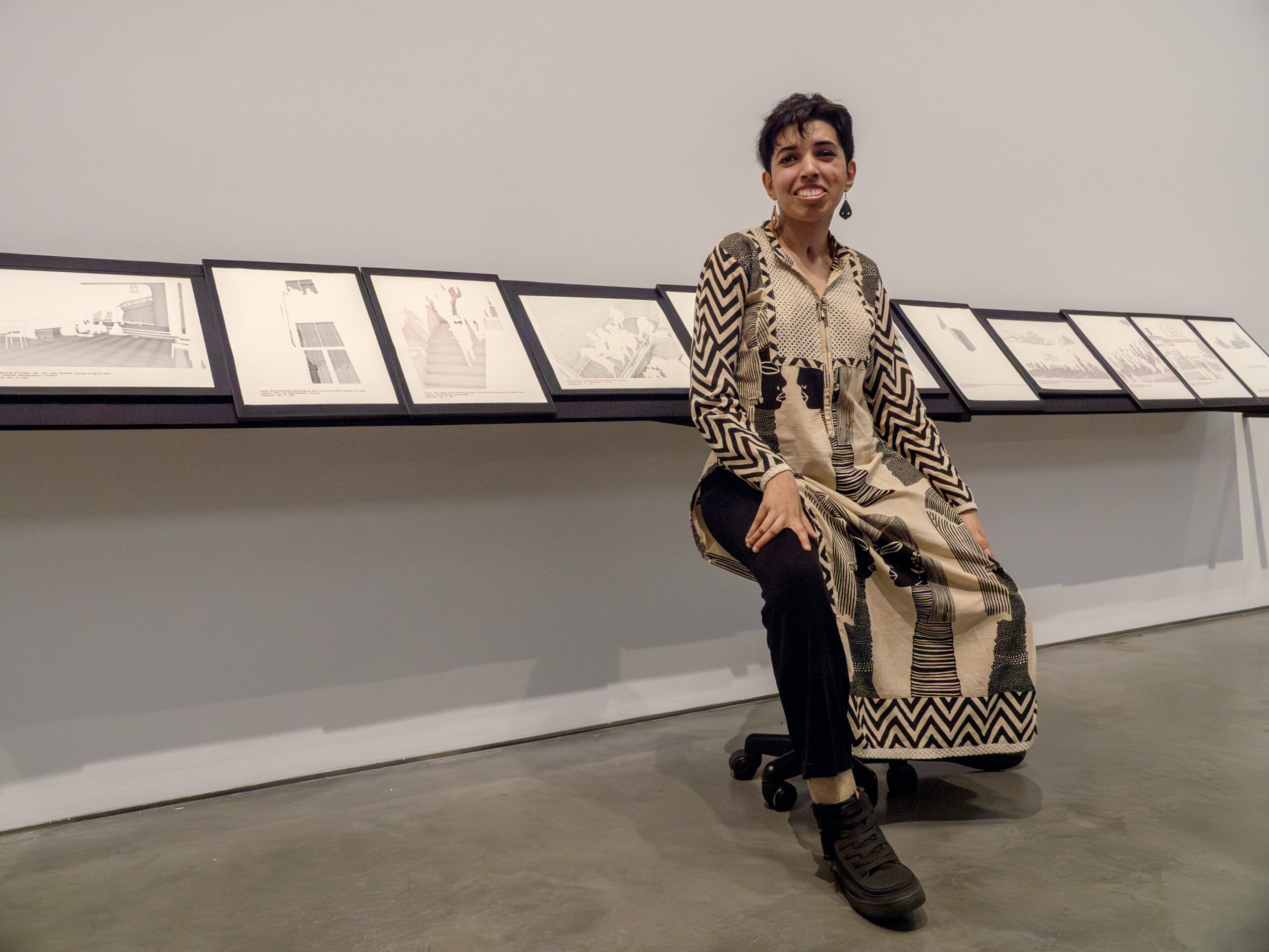
Daria Lugina/BAMPFA
May 14, 2025
When the Master of Fine Arts (MFA) exhibition opens today (Wednesday, May 14) at the Berkeley Art Museum and Pacific Film Archive (BAMPFA), Priyanka D’Souza will finally be able to get some rest.
As one of six MFA students graduating from UC Berkeley this spring, D’Souza has spent the past year collaborating with her cohort on the exhibit, the latest installment of an annual tradition that began in 1970 when Berkeley launched the former University Art Museum. Since that time, more than 300 artists have showcased their work in the annual presentation, including some who later became art world luminaries, like Jay DeFeo, Theresa Hak Kyung Cha, Shirin Neshat, Alicia McCarthy and Brontez Purnell.
Each of this year’s MFA graduates charted a unique path at Berkeley, but D’Souza’s was more distinctive than most. Her work explores how bodies move through and interact with public and institutional environments, especially museums, with a focus on rest, access and the politics of presence.
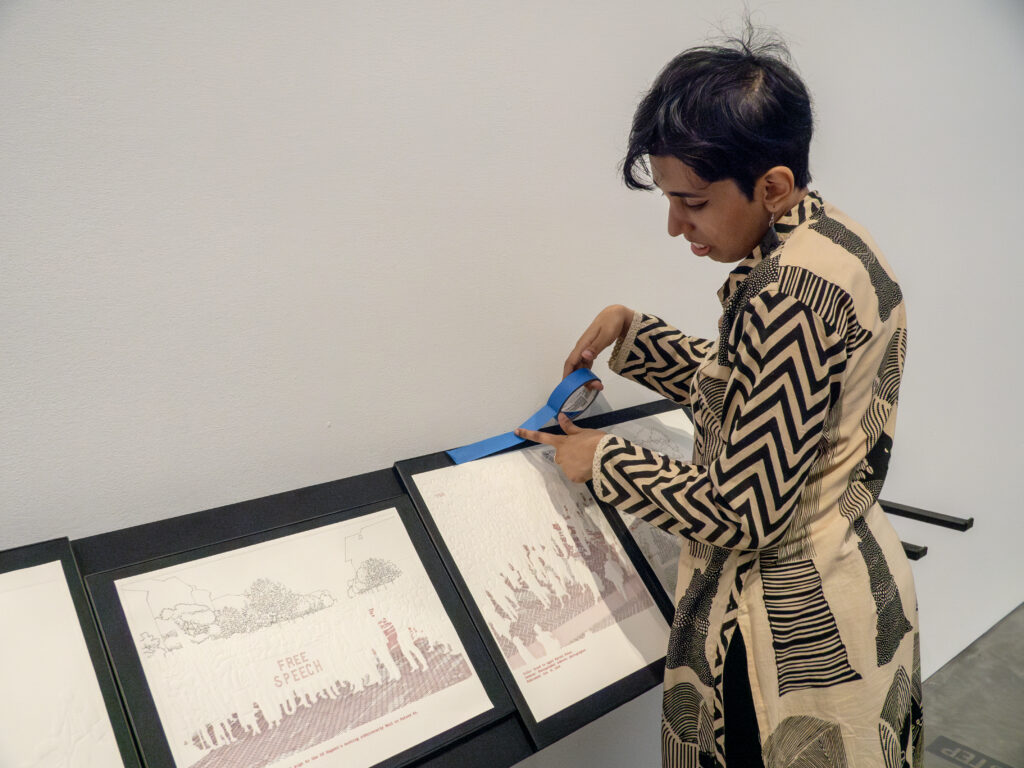
Daria Lugina/BAMPFA
“Everyone needs and deserves rest,” D’Souza said, describing the thought she puts into the seating around her installations. “Your attention to the work is different if you’re sitting instead of standing.”
Originally from Mumbai, D’Souza participated in 2022 in a formative artist residency at the Delfina Foundation in London, where she noticed how many of the city’s prestigious museums lacked meaningful accommodations for visitors. In response, she created the Instagram page Resting Museum, blending artistic practice with institutional critique to examine accessibility in cultural spaces.
The page grew into an artist duo with D’Souza’s collaborator, Shreyasi Pathak, who is a former archivist at the National Institute of Design in Ahmedabad, India. Together, the two artists investigate through Resting Museum themes of access, queerness and rest using self-described “crip humor,” with special attention to how these topics manifest in archives, museums and cultural discourse. D’Souza said she is very intrigued by the human spectrum between ability and disability, “like in the case of big museums, like The Met in New York, which only has the option of a wheelchair or seeing the exhibits while standing, and nothing in between.”
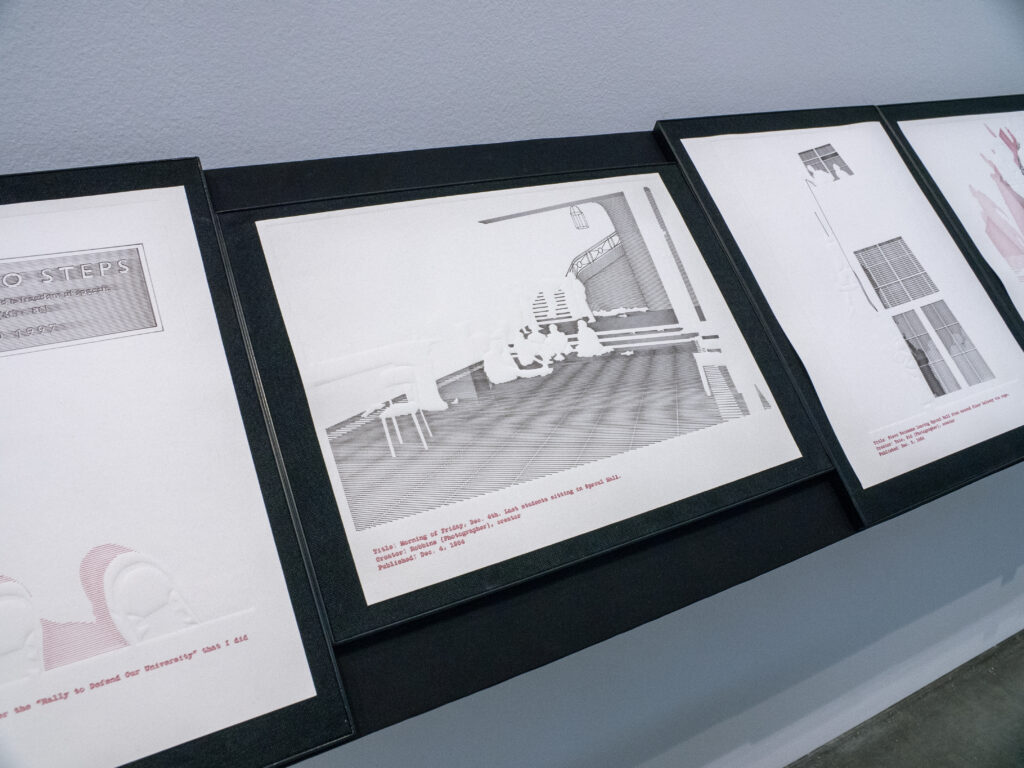
Daria Lugina/BAMPFA
“How does a body interact with an art object? A painting in a gallery or museum is typically hung at the eye-level of a Caucasian male who has dominated global design standards for eons,” said D’Souza. So for her BAMPFA installation, D’Souza made the conscious choice to display her drawings on angled shelves and provide seating so that it “privileges a seated person or a child’s position over a standing person’s position.”
Her attention to the viewing experience of a museumgoer is seen in the seats themselves — a set of wheeled stools — so that viewers can roll from one work to the next without needing to stand up again. “Having a rolling stool changes the way someone can move through and engage with the space. It offers more than comfort; it offers choice,” she said.
Part of what drew D’Souza to Berkeley was its legacy as the birthplace of the Disability Rights Movement — a heritage that endures to this day in the form of uncommonly robust support systems for students with disabilities.
But when it came time to formulate her work for the MFA exhibition, D’Souza turned her attention toward a different strand of Berkeley’s activist history: freedom of speech.
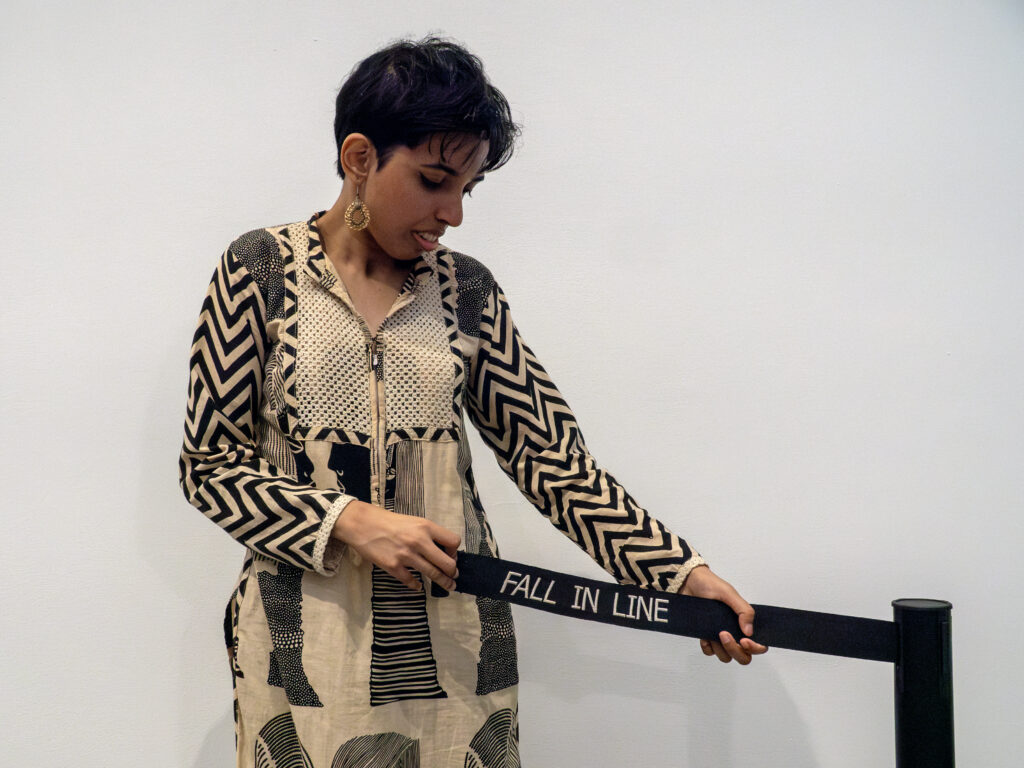
Daria Lugina/BAMPFA
Her interest was sparked by a moment of bureaucratic friction on campus that required a certain score on the TOEFL (Test of English as a Foreign Language) exam given to graduate students if they’re from countries that are not primarily English-speaking, before they can teach undergraduates. She aced the written portions of the test, but initially didn’t pass the speaking portion because her disability-related speech impediment was misevaluated as a language incompetency. Although Berkeley’s Disabled Students Program was able to step in to correct the mistake, this “very stressful” experience got D’Souza thinking about the physiological and political dimensions of speech at an educational institution.
When museumgoers encounter D’Souza’s work at BAMPFA, those familiar with campus history may recognize protest scenes from the Free Speech Movement, which electrified Berkeley during the 1960s. Originating as photographs from the university archives, these images were recreated by D’Souza, through many technically challenging processes, as embossed drawings.
The archival photographs first were traced by hand, then laser-cut into stencils that were embossed onto paper. Next, the campus architecture depicted in these photographs was abstracted into line drawings placed on the embossments with a Zund machine, a plotter used for more basic architectural plotting, as an extension of the artist’s hand. The end result is a set of recognizably historical images, but ones transformed into textured embossings that introduce an element of abstraction into photographic source material.
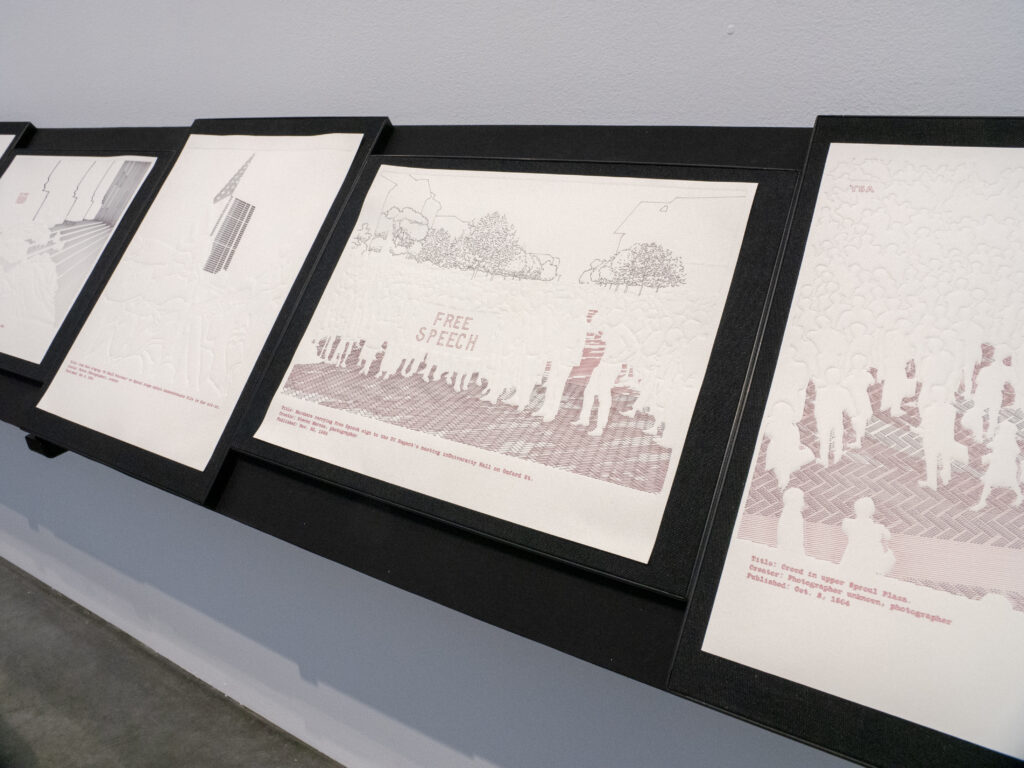
Daria Lugina/BAMPFA
An accompanying handout in the installation examines the politics of these campus spaces, particularly Sproul Plaza — a popular site for demonstrations since its construction in 1962, including the recent March 20 “Rally to Defend our University” that is represented in the last of D’Souza’s drawing series.
Next to D’Souza’s detailed drawings is a set of steel plaques, reminiscent of commemorative plaques on campus, that were laser-engraved with an archival document from the 1964 Free Speech Movement titled “Instructions for Walk-out Coordinators.”
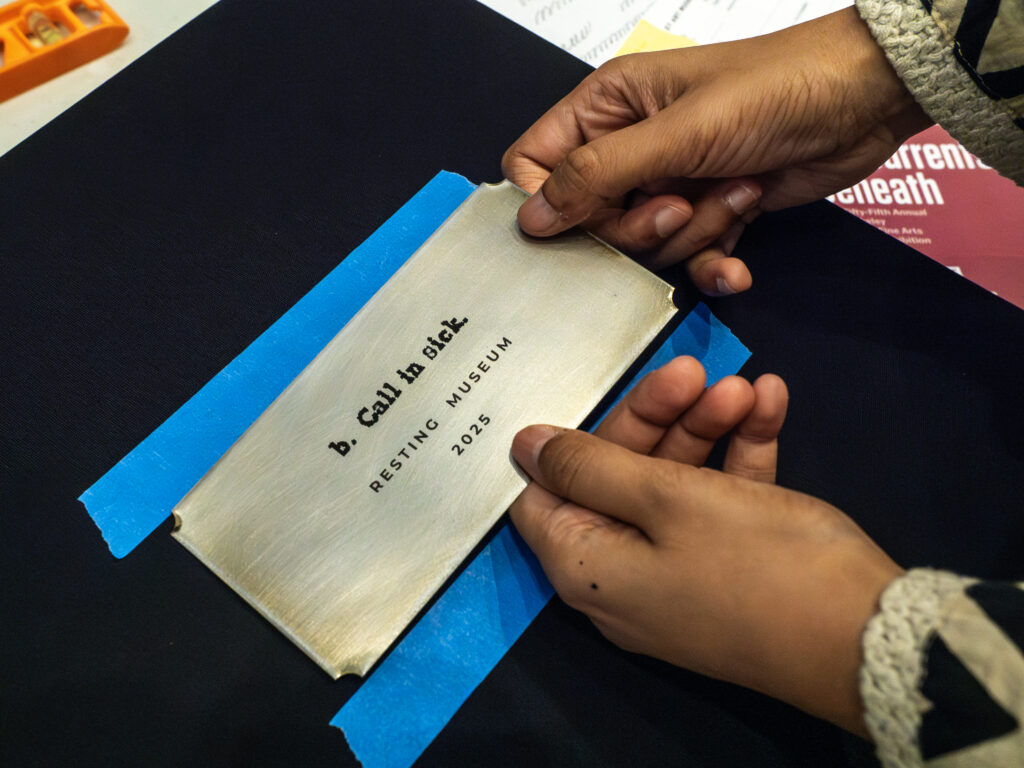
Daria Lugina/BAMPFA
“I was interested in this idea of walkouts, and we had recently had a walkout for Gaza on campus. But if you can barely walk, how do you walk out in protest?” asked D’Souza. “In this document, there are multiple ways to participate in protest. The first is to openly walk out. The second is to call in sick. I found that so interesting, considering that sick bodies have trouble accessing protest sites — and then how would the photographic archive tell this glorious story of protest if all the bodies in it had called in sick?”
Accordingly, the title of D’Souza’s thesis installation is a simple quotation from that menu of protest tactics: b. Call in sick.
The 55th Annual UC Berkeley Master of Fine Arts Exhibition runs from May 14 to July 27. Visitors are invited to BAMPFA to attend a joint artists’ talk by the 2025 MFA graduates on Friday, May 16, at 5:30 p.m. For more information, visit bampfa.org.